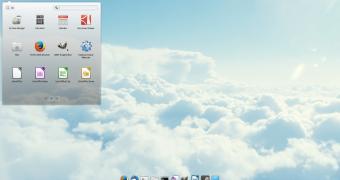elementary OS 0.2 was released in August 2013 and the Linux distribution has been rising steadily in the usage statistics. I reviewed it back then, and although I found it to be one of the most beautiful Linux OSes in existence, I was disappointed by the lack of customization support and by the fact that it was forcing me to stay within certain parameters dictated by the developer. Now I'm giving it another try – I still think it's too rigid, but I can't let it go.
I'm going to make a lot of enemies with this piece, but I really do think that elementary OS is more form than function. It's designed to be beautiful rather than functional. That might not be an issue if you don't have a lot of stuff to do in an operating system, but if you actually have some work to do, then you will be faced with numerous problems.
Let’s take a look at some examples. The developers of elementary OS provide a few repositories of their own, and by default, some of the regular repositories have been disabled. This is one of the reasons why the software that you can install from the get-go is very old. I needed GIMP, but I got only the 2.6.x branch. This was available in the Ubuntu 12.04 LTS repositories, so this is what you get.
None of the windows have minimize buttons. I know, it's a design choice, but it makes no sense. The minimize functionality is there and you can minimize the windows by clicking on the icon in the dock, but that's just convoluted.
You don't have a desktop. Most users who install this operating system for the first time will be facing this issue. The developers said from the start that this was a design decision and that they didn’t want people to pollute the desktop with their icons.
Some of the default applications in elementary are not ideal; I understand that you want to be different from everyone else, but installing Midori as the default browser and Geary as the default email client is not really a choice you want to make.
The last thing I want to mention is the lack of customization options. You can't really change stuff in the system, not even minor things. This take it or leave it attitude might be OK with some of the Apple customers, but it shouldn't fly in the Linux community, although it's the developer's right to do whatever he pleases.
Now, let's fast forward a year. I installed elementary OS once more, in the hope that I might do a little bit more than just gaze at a beautiful, but icon-free desktop. I was right to do so, but don't get me wrong. It's still a very rigid system. The community on the other hand is not, and now you can do a lot more with elementary OS.
With the community and the developers’ help, you can now get a Tweaks entry in the System Setting and do all sorts of wondrous things, like displaying a minimize button, move the dock all over the place, change the system themes, change the dock themes, and even get the Slingshot launcher to be transparent.
It's still a problem to get my precious desktop back, but I discovered that I didn't actually care. This is the hallmark of a great product. If things get done well, users and customers are ready to jump through hoops just to use that product.
I've been avoiding elementary OS because I didn't like its rigidity, but I've embraced it now. It's almost a guilty pleasure, like ice cream. I know that if I use it I'm enabling its developers to do the same in the future, but in the end it doesn't really matter. I love elementary OS and I hate myself for it.

 14 DAY TRIAL //
14 DAY TRIAL //